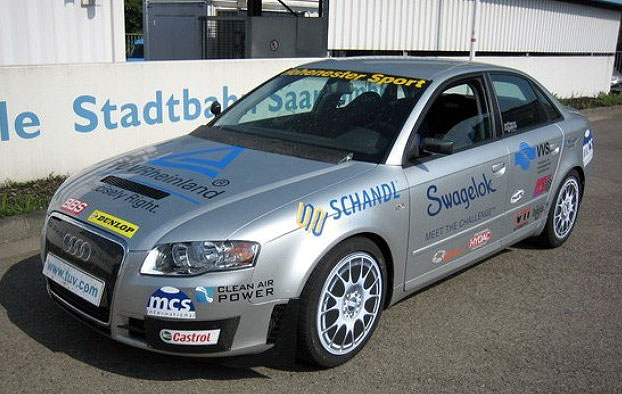
Audi A4 fueled by biogas
But it's emitting more from its tailpipes. Swedes are driving more—enough to wipe away any the gains from greener cars—and overall vehicle emissions have risen in this land of sustainability and forward thinking.
Thanks to greener new cars—a combination of clean-diesel, bi-fuel (E85), and biogas (mostly compressed natural gas) vehicles—along with an aggressive program to scrap older guzzlers, the country has cut carbon dioxide emissions by 165,000 tons.
Cars have become greener...and overall emissions rose?
But while per-car carbon-dioxide emissions decreased from 164 to 151 grams of CO2 equivalent per kilometer driven, and biofuels made up a record 5.6 percent of Sweden's vehicle fuels in 2010, people drove more and overall motor-vehicle emissions actually rose by about 110,000 tons, according to recent data from the Swedish Transportation Agency, Trafikverket.
Green cars, such as these, are exempt from the congestion tax in Stockholm, Sweden's capital and largest city, and given other perks—which might be among the reasons why clean diesels have gone from 40 percent of new-car sales there in 2009 up to 49 percent in 2010.
The same has been happening here in the U.S., where motorists drove more in 2010—about 0.7 percent more, or 20.5 billion additional vehicle miles in all—versus 2009, according to new data released by the Department of Transportation this week. Considering the greening of the fleet through the federal government's Cash for Clunkers program in 2009, it's likely we'll see slight improvement in U.S. motor-vehicle carbon-dioxide emissions (the numbers aren't yet out).
The Swedish agency points to public transport, cycling, and train travel, and emphasizes that societal and infrastructural changes are needed.
If one of the most socially conscious nations in the world isn't succeeding at that, we have quite the global hurdle, considering that car ownership continues to soar in China, India, and other emerging markets.
Do hybrids and other green cars let owners rationalize more driving?

2011 Toyota Prius
But the trend goes along with what has been observed in the U.S.—for example, from San Francisco-based Quality Planning, which observed in a large-scale study from 2009 that hybrid owners drive up to 25 percent more than non-hybrid owners, largely offsetting any gasoline savings.
There's been a longtime debate in green circles, though, as to whether those who intend to drive more are attracted to hybrids, or whether hybrid ownership allows them to rationalize driving longer distances.
And it leads to an interesting question: If you green the fleet quite dramatically, or provide special perks to those who drive green cars, does it invite people to drive more?
Tell us what you think in the Comments below.
[Trafikverket, via TreeHugger]
+++++++++++












